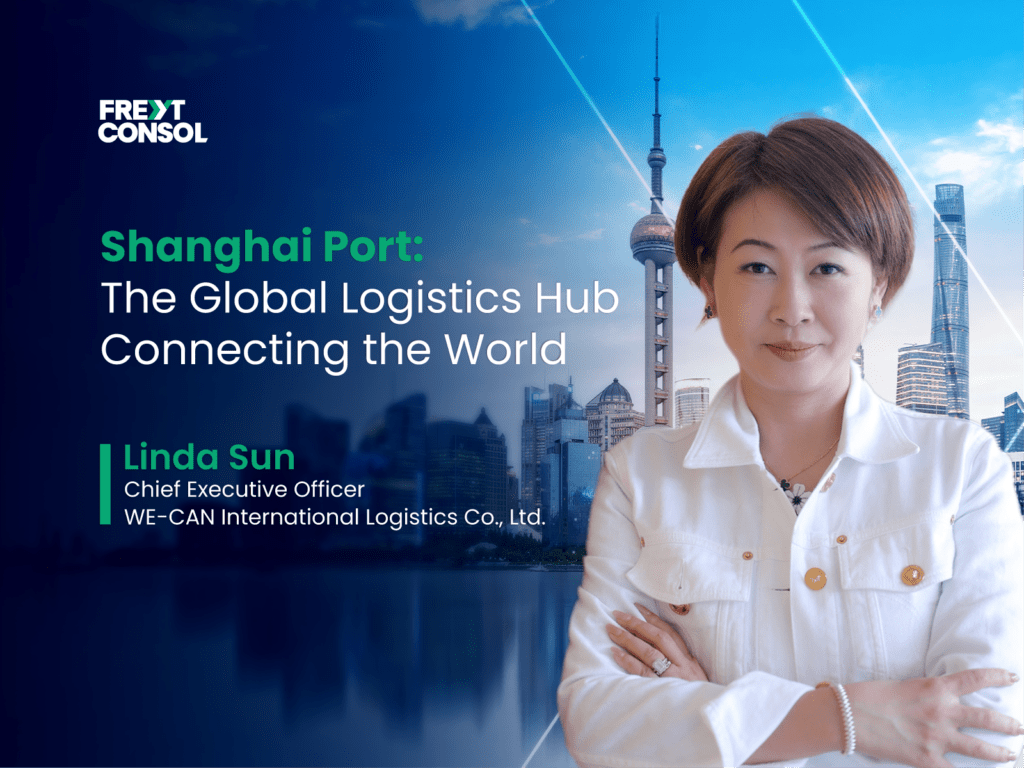By Linda Sun, CEO, WE-CAN International Logistics Co., Ltd.

Logistics isn't just shipping goods; it's about building and growing connections for businesses, companies, consumers, and manufacturers. Shanghai port has been one of the busiest ports and transshipment hubs for global shipping connections. It has been a logistics hub, supporting our LCL shipments and supply chain operations at WE-CAN International Logistics Co., Ltd.
I've seen Shanghai is not just a Chinese trade center but is becoming key in the global shipping network. Shanghai's strategic location and world-class facilities make it ideal for goods traveling between Asia and the world.
Through the Years
There have been a lot of developments in port operations, and we have seen the changes over the years:
Infrastructure Growth: Shanghai Port leads in container handling, maintaining its status as the world's busiest port for 15 consecutive years. With an impressive throughput of 50 million TEUs in 2024 and ongoing development projects like the Yangshan Deep-Water Port, Shanghai's maritime infrastructure serves both China's domestic needs and the broader demands of international commerce.
Logistics Innovations: The Shanghai logistics sector employs advanced digital technologies and smart systems to maximize operational efficiency. Shanghai port operates with complete automation, using AI-driven robotics and sensor networks that require minimal human oversight, making it one of the world's most technologically sophisticated maritime facilities.
Investment and Policy Support: By implementing forward-thinking economic strategies, Shanghai has positioned itself as a premier destination for global investment. The city has implemented strategic policies to boost the logistics sector, offering targeted incentives for international companies to set up research facilities and logistics operations. This proactive approach has fostered a dynamic ecosystem that accelerates cross-border trade and innovation.
Global Connectivity: Shanghai port's extensive maritime network reaches over 700 ports across 195 countries, establishing it as a dominant global shipping hub. Its strategic position and expansive connectivity, combined with its integral role in China's Belt and Road Initiative, have cemented Shanghai's status as a critical nexus for international trade between Eastern and Western markets.
Sustainability Efforts: Shanghai is making significant strides in green logistics by introducing hydrogen fuel trucks and sustainable fuels. This initiative highlights the city's commitment to eco-friendly growth and sustainability. By adopting these innovative technologies, Shanghai aims to reduce its carbon footprint and promote a cleaner, sustainable future for logistics. This proactive approach benefits the environment and sets a benchmark for other cities in sustainable development.
Shanghai Port Developments as a global logistics hub
These developments make it clear that Shanghai's influence extends beyond China. It is becoming essential in global supply chains, offering advanced logistics services that cater to worldwide needs. I believe this transformation isn't just moving goods; it's about building a connected world with efficiency, innovation, and sustainability. Shanghai, as a global logistics hub, moves shipments to and from various parts of the world. If you're in logistics, manufacturing, or trade, view Shanghai not just as a business destination but for building strategic partnerships. As one of the premier LCL providers in the region, partnering with We-Can International Logistics can help you leverage these opportunities.
Freyt Consol Blog Contributor
Freyt Consol is a global network for LCL consolidators and NVOCCs dedicated to excellence and long-term growth. We create an environment where members thrive by collaborating with trusted partners and accessing essential resources.





